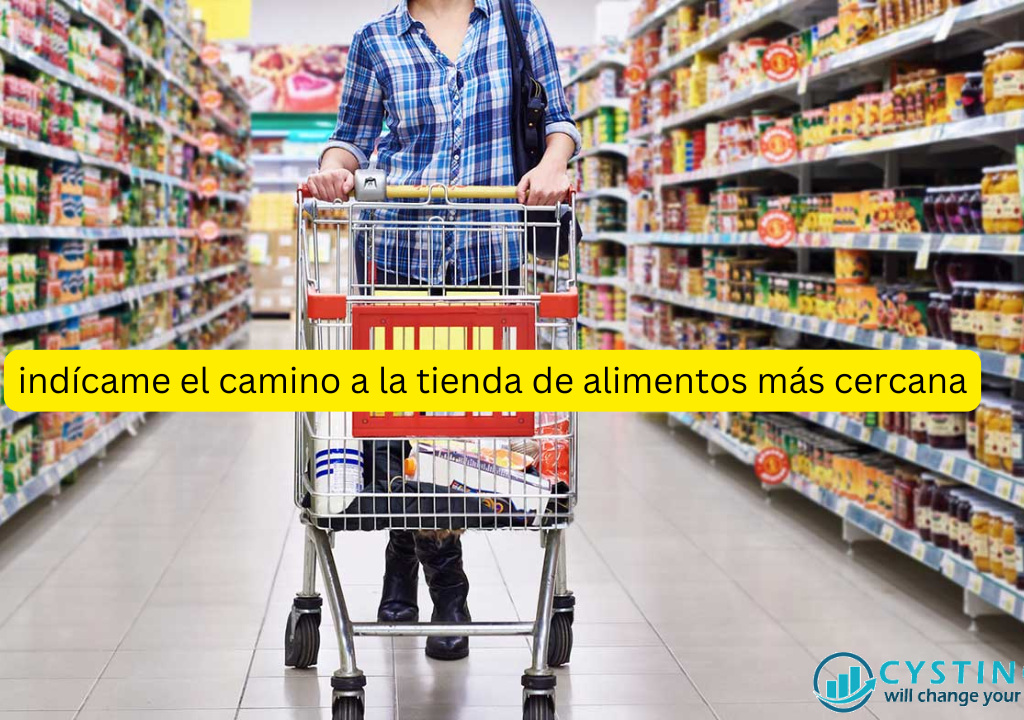Table of Contents
Understanding Basic Spanish Navigation
When traveling in a Spanish-speaking country, finding essential services like grocery stores is crucial. One of the most important phrases you’ll need is “indícame el camino a la tienda de alimentos más cercana” (show me the way to the nearest grocery store). This simple yet powerful phrase can help you locate food and supplies when you need them most.
Breaking Down the Phrase
Let’s look at each part of this helpful phrase:
- “Indícame” – Show me
- “el camino” – the way
- “a la tienda de alimentos” – to the grocery store
- “más cercana” – nearest
Common Scenarios and Responses
When you ask “indícame el camino a la tienda de alimentos más cercana,” locals might respond in various ways. For example, they might tell you “The route to the nearest grocery store is the street immediately after the police station.” Understanding these kinds of directions requires familiarity with basic Spanish location words.
Key Landmarks and Direction Words
When receiving directions in Spanish, you’ll often hear references to common landmarks such as:
- La estación de policía (police station)
- La esquina (the corner)
- El semáforo (traffic light)
- La calle (the street)
- El edificio (the building)
Tips for Understanding Spanish Directions
Following directions in a foreign language can be challenging. Here are some helpful strategies:
1. Listen for Numbers
Pay attention to numbers that indicate distance or street names. Spanish speakers might tell you how many blocks to walk or which street number to look for.
2. Watch for Hand Gestures
Many people naturally point or gesture while giving directions. These visual cues can help you understand where to go, even if you don’t catch every word.
3. Confirm Your Understanding
After receiving directions, it’s helpful to repeat them back to ensure you’ve understood correctly. You can start with “Entonces…” (So…) and summarize what you heard.
Using Technology as a Backup
While knowing how to ask “indícame el camino a la tienda de alimentos más cercana” is valuable, it’s wise to have backup options:
Mobile Apps
Consider downloading offline maps and translation apps before your trip. These can be lifesavers when language barriers arise.
Written Addresses
Keep the written address of your accommodation handy. If you get lost, you can show this to locals or taxi drivers.
Cultural Considerations
In Spanish-speaking countries, people are generally very helpful when giving directions. However, customs may vary by region:
Time Estimates
When someone tells you a place is “cerca” (close), their idea of walking distance might differ from yours. It’s okay to ask for clarification about the actual distance.
Formal vs. Informal Speech
While “indícame el camino a la tienda de alimentos más cercana” is polite, you might hear more casual variations. The meaning remains the same, but the words might change slightly.
Practice Makes Perfect
Before your trip, practice saying “indícame el camino a la tienda de alimentos más cercana” until it feels natural. Remember that perfect pronunciation isn’t as important as making yourself understood.
Safety Considerations
When asking for directions to the nearest grocery store, keep these safety tips in mind:
- Ask in well-lit, public places
- Trust your instincts
- Pay attention to your surroundings
- Keep valuable items secure
Conclusion
Learning to ask “indícame el camino a la tienda de alimentos más cercana” is more than just memorizing words – it’s about connecting with local people and navigating new places confidently. With practice and patience, you’ll find that asking for directions in Spanish becomes easier and more natural.
Remember that most people appreciate the effort to speak their language, even if you’re not perfect. Don’t be afraid to use this phrase and other Spanish expressions during your travels. The more you practice, the more comfortable you’ll become with finding your way around Spanish-speaking communities.

